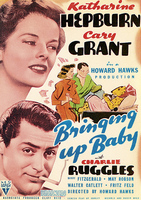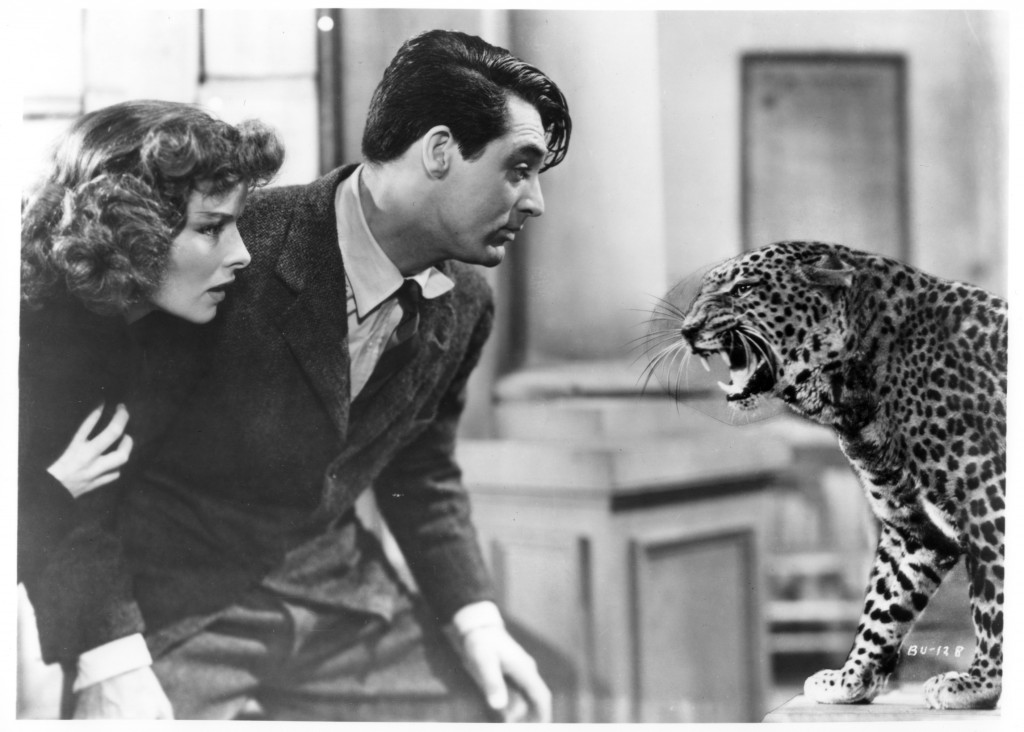
Bringing up Baby is a film which explores the relationship between humans and animals through the use of doubling. This is particularly evident in the scene where Susan lets a wild leopard escape from a circus and culminates in the scene where the leopard is wrangled into a jail cell by David.

The use of doubling as a cinematic device is very important in this text because ‘through rendering one into two, the double’s gender identity becomes confused or ‘difficult’’[1]. The fact that an animal is doubled instead of a person through the juxtaposition of a wild leopard and a tame one throws the concept of a double’s confused identity into flux, forcing a new perspective onto the audience. Although the gender identity of the two leopards is not presented as difficult this raises the idea that instead of gender it is the wildness of the animals which has become confused. The only difference between the two leopards is that one is tame and the other is wild, and this difference is also mirrored by the two protagonists as Susan causes constant chaos for David who is level headed.
This mirroring occurs in the scene where Susan lets the wild leopard escape because she falls down when she tries to catch it. Susan is in effect trying to catch herself and reconcile her confused identity as the wild leopard is a representation of her. Conversely, in the later scene where David subdues the wild leopard with the use of a chair he is able to do this because he is the male in the relationship and therefore he holds the power of authority. Throughout the film a point of comedy for the audience is the idea that Susan has the most power in the relationship; in the 1930’s it would be unusual for a female actress to have more autonomy than her male counterpart and therefore it adds an extra layer of humour to Susan’s shenanigans. This is evidenced by later films such as The Misfits which was released in 1961 and portrayed Marilyn Monroe as unable to take power from her male counterparts when the horse she released was captured only to be re-released by Gay on his own terms.
As Bringing up Baby was released 20 years earlier it is reasonable to assume that an earlier audience would perceive Susan’s position of power over David as humorous. The wild versus tame doubling of the leopards adds another visual and narrative layer to the confused gender identity of the two protagonists by reflecting their issues and driving the narrative forward. The narrative is given closure through David apprehending the wild leopard after Susan has already caught it. However as soon as she realises she has caught herself she lets go of the leash and runs to David for protection. David then reconciles his confused gender identity by stepping into his role as male protector, saving the damsel in distress and finally taking the keys from Susan to lock the wild leopard into a cage in the form of the jail cell where Susan had been trapped only minutes previously.
[1] Caroline Ruddell, The Besieged Ego: Doppelgangers and Split Identity Onscreen, (Edinburgh: Edinburgh University Press, 2014), p.79.